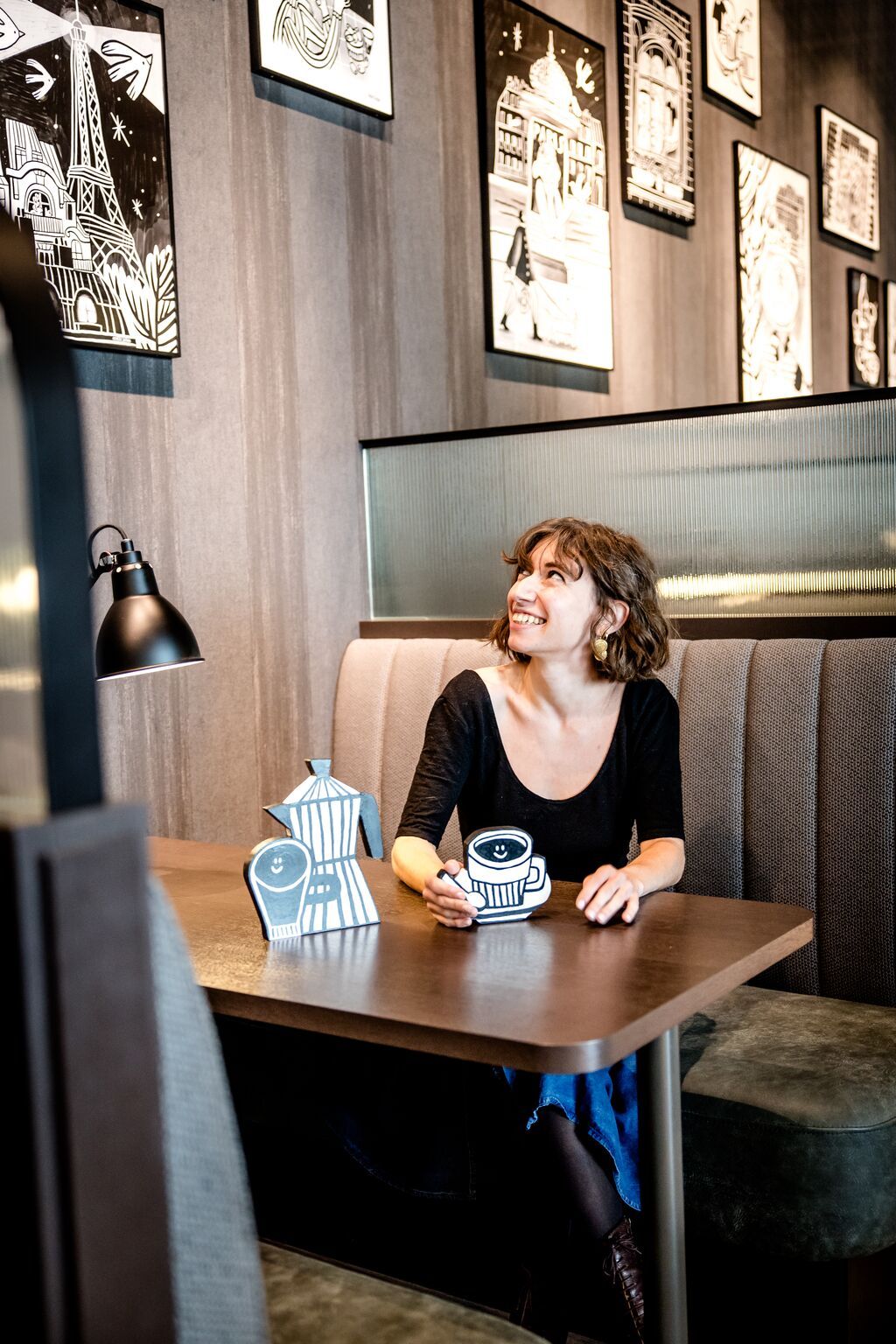Amazing Fantasy Worlds
10 questions for Thomas Draschan


What was it like working for the Motel One Vienna-Westbahnhof?
I worked all the details out with the Motel One design team, which meant we could perfectly integrate the works without me being artistically restricted. It has been my best cooperation so far, with the most scope for my creativity that I have ever had on such a big project.
Who is your art aimed at?
Sometimes I have a real or imaginary audience in mind. For this specific cooperation with Motel One, I imagined what it would be like to live in a room for a few days: the hotel guest is the one looking at the art, not a gallery visitor.
How did you move from film to collage?
My films were analogue. To make them, I reworked old archive films into so-called “found footage films”. The editing technique from the chronological sequence and the sequence, basically a montage, seemed very close to the collage to me. You let two different elements clash and react with each other. If you’re lucky, the mixture explodes.
Where do you get the inspiration for your dream worlds?
First, I follow my personal tastes and preferences. Many of my works are triggered by reading: literature from the Decadent Movement, works by Flaubert or Raymond Roussel for example.
“The traveller sees an imaginary parallel dimension that continues their real-life journey into a virtual space.”
Thomas Draschan


How do you get your hands on the often decades-old materials that you use in your collages?
Most of it comes from flea markets, antiquarian bookshops and the internet. My ideas always emerge as an answer to a found object. As a collector, I always keep my eyes open. I found some important elements for my Motel One work when I was just shopping off the beaten track, in vintage shops or on the streets.
Why are bygone decades so important in your art?
Nostalgia has arisen as a reaction to the rapid changes in our world. That’s one aspect. A second is that the simultaneity of epochs at a glance is one advantage of the collage technique.
When it comes to collages, many people intuitively think of scissors and glue. Why do you work on the computer?
At the end of the day, I also think in a very old-fashioned way on the computer, with hard edges and clear cuts like with scissors. But I would never cut up unique pieces such as amateur or personal photos. That's how you decide whether a work is created analogue or digitally.
How does the collage then come together?
The material has often been in my archive for years. Then suddenly, like a flash, an image comes to me that perfectly complements to the rest.
What are the recurring themes of your work?
Eros, Thanatos, eternal youth and infinity.
How would you describe the visual aesthetics of your work?
Eclectic. The look depends strongly on the material used.






